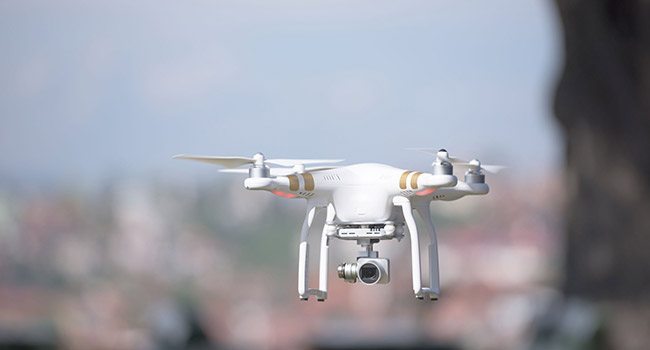|
This fall, sky-watching Tucsonans may spot some unfamiliar wings overhead: hobby-sized drones quietly testing air quality with high school students at the controls.
That’s the vision for a new STEM curriculum spearheaded by the Cooper Center for Environmental Learning, a partnership of the University of Arizona College of Education and Tucson Unified School District.
The program will bring citizen science to high school students in four stages:
The curriculum is being developed by Cooper Center associate director Constantinos Manoli in partnership with Ang Li, a UA graduate student in educational psychology, and Jianping “J.P.” Jiang, a physicist and former UA optics researcher whose Tucson-based Instant BioScan startup was acquired by a Swiss technology company in a 2015 multimillion-dollar sale. The project aligns with the Cooper Center’s mission to deliver science and environmental education as a way to help young learners develop an enduring love and respect for the natural world, as well as its commitment to helping train future educators through hands-on, real-world teaching. The initiative also helps meet the Cooper Center’s goal to serve new audiences. While thousands of K-8 students visit the center annually, the center hasn’t offered a high school-specific program since the 1980s. “We want to serve the community by working with learners of all ages. There are different skills for different levels, but the overall need – to inspire our citizens to live in a more environmentally sustainable way – doesn’t have an age limit,” Manoli said. “We’re taking the same approach for these high school students as we do with younger students. We’re not telling them what to think about the environment. We’re giving them information and helping them gather their own information so they can decide what’s important to them and what they want to do about it.” The curriculum is designed to build transferable skills for STEM education and employment. While students will specifically explore dust and microbial air pollution, they’ll also learn the fundamentals of research, data analysis, collaboration and science communication. “The optical particle counters have been used in industry since the 1970s, but not for environmental air monitoring,” Jiang said. “It’s essentially a sharp eye to look at particles. The biggest challenge will be teaching students how to handle the devices and convert data into useful presentations, but that’s also the most important outcome: training students in practical, technical skills.” Operated since 1964 and funded almost entirely by grassroots donors and private grants, the Cooper Center for Environmental Learning is a “living classroom” in Tucson’s desert foothills, run by the UA College of Education in partnership with TUSD. Each year more than 3,000 kids visit the Cooper Center, also known as “Camp Cooper,” for hands-on, outdoor science lessons designed to inspire an enduring love and respect for the natural world. The center also gives every UA K-8 education major real-world practice working with young learners and serves as a setting for published research on how kids learn in and about nature. |




